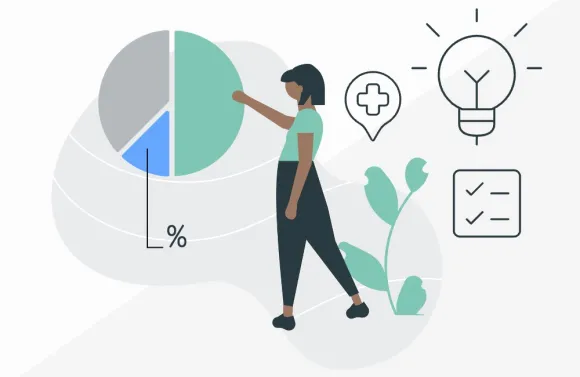
What does employee benefits success look like to your HR team? A smoother-than-ever benefits enrollment experience? A higher-than-ever benefits communications engagement rate? A transformed approach to whole-person wellbeing that leads to better health outcomes?
No matter how your HR team measures success, leaders are – or can be! – major players in driving results. C-Suite executives to front-line managers are benefit program stakeholders and beneficiaries, after all, and their participation can super-charge your initiatives. Here are five ways to get them involved:
1. Share the ROI
Building a business case for executive buy-in to participate in your benefits programs needn’t be a heavy lift. At this point, most leaders:
-
Recognize the connections between employee health, wellbeing and productivity – and the costs associated with not supporting their workforce
-
Know that top talent wants to work for organizations that deliver value through comprehensive employee benefits programs and cultures that prioritize whole-person wellness – and the costs associated with attraction and retention
-
Appreciate that employee benefits programs play a critical role in helping them manage their health and wellbeing
Even so, if it helps to remind leaders that the success of your benefits programs means success for the company – however they want to measure it – then sweeten your “ask” with some metrics.
2. Invite Them to Shine
A high-performing employee benefits program is definitely something to brag about – so give your leaders the opportunity to strut their stuff.
Plus, who doesn’t want to be a hero? For benefits programs that involve volunteering, friendly competition or team-based engagement, such as popular wellness challenges, ask your company executives to lead teams. They can put their face and natural coaching skills on display while encouraging employees to join in and have fun. Likewise, you can ask them to share their experience or knowledge at a relevant benefits-focused lunch-and-learn or workshop.
3. Arm Them with Bullet Points
When it comes to benefits communication and engagement efforts, leaders can be among the best messengers. You may ask them to promote a new benefit program or activity – or to solicit feedback from their teams about an HR topic. They have lots of competing priorities, but they’ll be more inclined to help if you make it easy for them to do what you need them to do. Give them a script with key points to get across, email them links to resources they can share with their people and follow-up with reminders and status reports.
4. Encourage Them to Walk the Talk
Leaders know that employees at all levels are watching them for cues and clues, but it bears repeating that a leader who demonstrates healthy behaviors is a leader whose employees feel more comfortable following suit. With employee benefits, it’s helpful when leaders purposefully share positive experiences with their teams. That could mean telling people that they downloaded the new benefits enrollment app and found it easy to use or that they took an afternoon break to enjoy a guided meditation to reduce stress.
Leading with authenticity manifests as being more forthcoming about managing daily work/life challenges. The employee benefits at their disposal are there for a reason, and leaders can help normalize their use. If your organization (and therefore, leadership team) is cultivating a whole-person approach to wellbeing, leaders can help create a true win-win with themselves and your benefits program.
5. Welcome Their Feedback
Leaders outside of the human resources function may not have many opportunities to strategically “talk benefits,” but they’re well positioned to offer opinions and raise concerns up the flagpole (especially if they’re towards the top). While including executives and managers in your benefits program initiatives, don’t forget to ask them how their benefits experiences are going and how their teams are responding.
If they are partners in your success, make sure you listen to their voices. Your goodwill and collaboration can help you iterate on your programs and build success on top of success, year after year.


